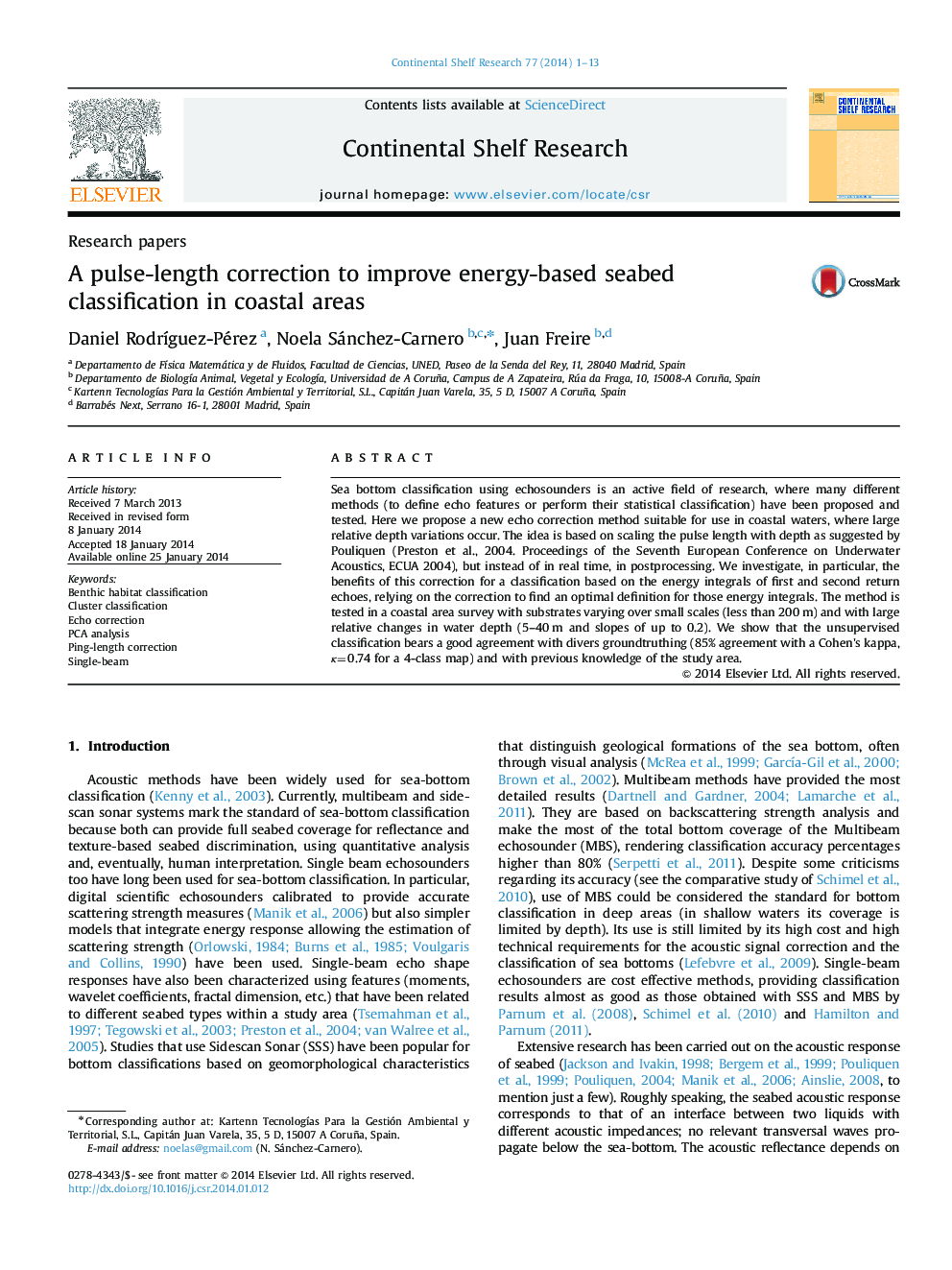| Article ID | Journal | Published Year | Pages | File Type |
|---|---|---|---|---|
| 4531959 | Continental Shelf Research | 2014 | 13 Pages |
•A new single beam echo correction method is proposed for shallow waters.•Convolution is applied to simulate echo lengthening to allow for sampling artefacts.•Correction is used in a power based classification using first and second echoes.•Groundtruthing showed a result with high statistical significance (Cohen׳s kappa=0.74).•The use of open source software in processing allows use of the technique by others.
Sea bottom classification using echosounders is an active field of research, where many different methods (to define echo features or perform their statistical classification) have been proposed and tested. Here we propose a new echo correction method suitable for use in coastal waters, where large relative depth variations occur. The idea is based on scaling the pulse length with depth as suggested by Pouliquen (Preston et al., 2004. Proceedings of the Seventh European Conference on Underwater Acoustics, ECUA 2004), but instead of in real time, in postprocessing. We investigate, in particular, the benefits of this correction for a classification based on the energy integrals of first and second return echoes, relying on the correction to find an optimal definition for those energy integrals. The method is tested in a coastal area survey with substrates varying over small scales (less than 200 m) and with large relative changes in water depth (5–40 m and slopes of up to 0.2). We show that the unsupervised classification bears a good agreement with divers groundtruthing (85% agreement with a Cohen׳s kappa, κ=0.74 for a 4-class map) and with previous knowledge of the study area.
